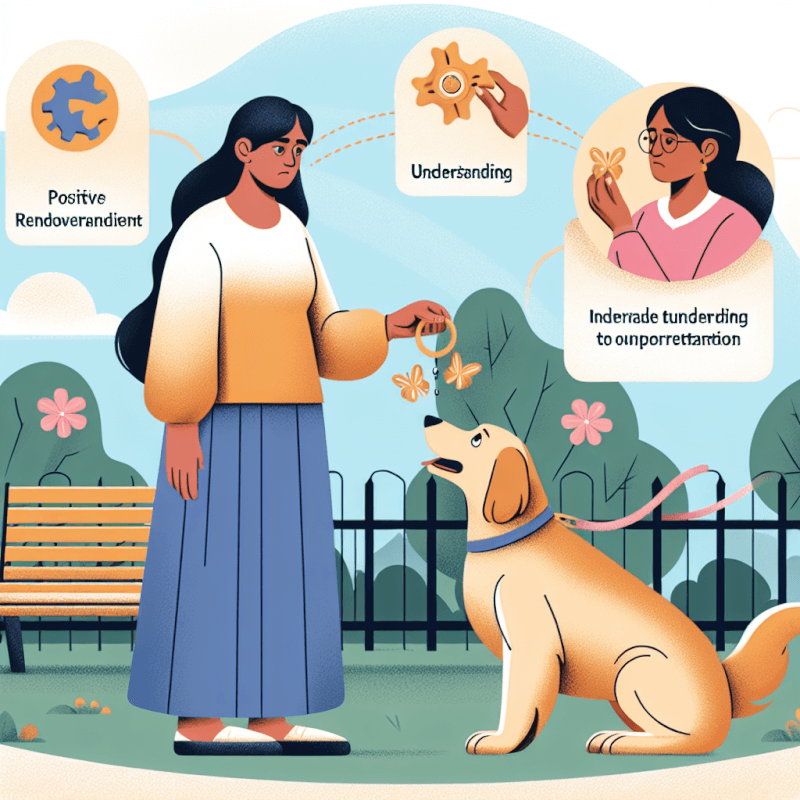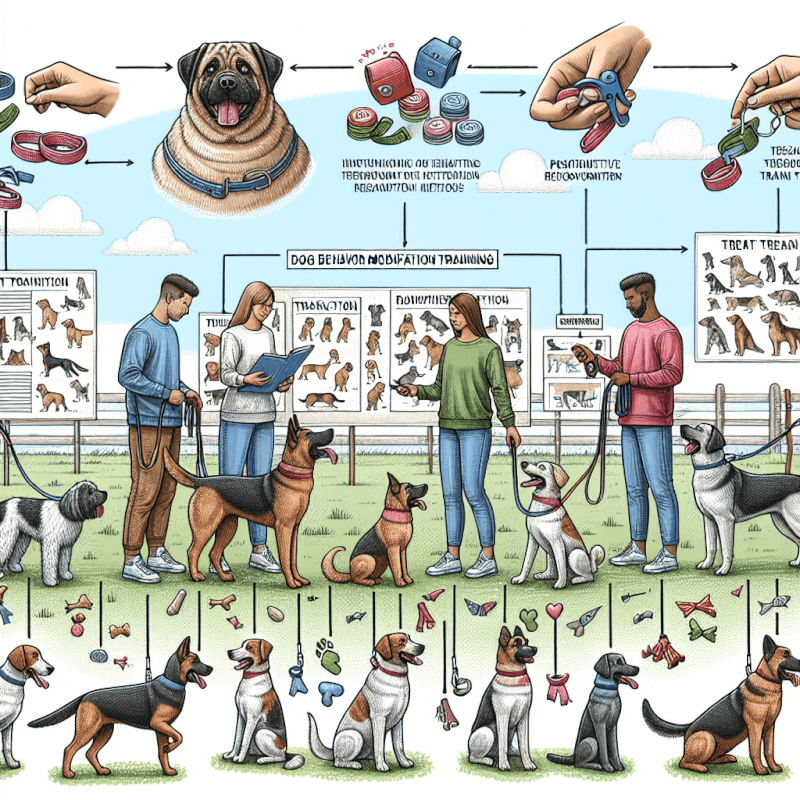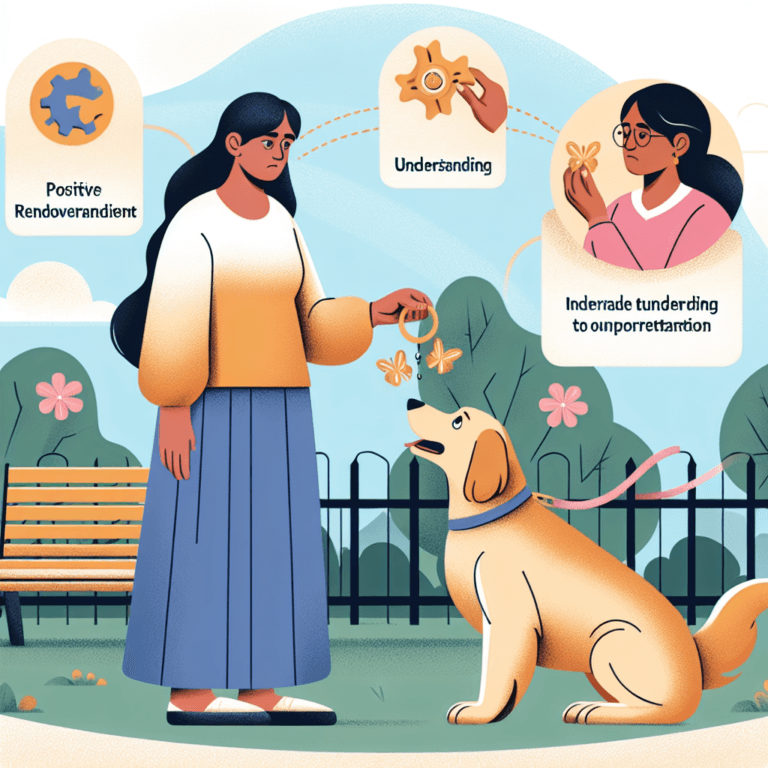You’ve always adored your furry friend, but recently, you’ve noticed some concerning behaviors that need addressing. Whether it’s incessant barking, destructive chewing, or jumping on guests, it’s clear that your dog could benefit from some behavior modification training. In this article, we will explore the world of dog training behavior modification, offering effective techniques and strategies to help transform your canine companion into a well-behaved and obedient member of the family.
Understanding Dog Behavior
The Nature of Dog Behavior
Dog behavior is a complex and fascinating subject. To understand why dogs behave the way they do, it is important to recognize that they are animals with instinctual behaviors ingrained in their DNA. Dogs are descendants of wolves, which were highly social animals that lived in packs. This pack mentality still influences dog behavior today. Dogs are naturally social animals that thrive on companionship and structure. Understanding the innate nature of dogs can help us better comprehend their behaviors and respond to them effectively.
Ready for Cat Trivia?
Test your knowledge about cats!

Understanding Pack Mentality
One key aspect of dog behavior is their tendency to form social hierarchies within a pack. In the wild, wolves establish a pecking order or dominance hierarchy to maintain order and cooperation. Domestic dogs still exhibit this pack mentality and have a natural inclination to establish their rank within the household. This is why it is crucial for dog owners to establish themselves as the pack leader through clear and consistent rules and boundaries.
Common Dog Behavior Issues
Dogs, like humans, can display a range of behaviors that may be challenging or undesirable. These behavior issues can include aggression, separation anxiety, excessive barking, destructiveness, and more. Understanding common behavior problems is essential for addressing them effectively. By identifying the underlying causes, we can focus on behavior modification techniques to address these issues.
Identifying Behavior Modification Needs
Recognizing Problematic Behaviors
The first step in behavior modification is recognizing which behaviors are problematic or undesirable. This may include actions such as aggression towards people or other animals, fearfulness, excessive jumping, digging, or even destructive chewing. By identifying these problem behaviors, dog owners can take the necessary measures to address them and prevent any potential harm or inconvenience.
Evaluating Behavior Triggers
To effectively modify a dog’s behavior, it is crucial to evaluate the triggers that elicit these behaviors. Dogs may react negatively to certain stimuli, such as loud noises, unfamiliar people or animals, or changes in their environment. By identifying the specific triggers that lead to the undesired behavior, dog owners can develop targeted behavior modification plans to help their pets overcome their negative reactions.
Assessing the Dog’s Environment
The environment in which a dog lives plays a significant role in shaping their behavior. Factors such as the presence of other pets, the layout of the house, and the level of mental and physical stimulation provided can all contribute to a dog’s behavior. Assessing the dog’s environment is essential to understanding any potential stressors or deficiencies that may be contributing to problem behaviors. By making appropriate adjustments to the environment, dog owners can create a more conducive setting for behavior modification.

Positive Reinforcement Training
Definition and Principles of Positive Reinforcement
Positive reinforcement training is an effective and humane method of teaching dogs desired behaviors. This technique focuses on rewarding the dog for exhibiting positive behaviors, rather than punishing or scolding them for undesirable actions. The underlying principle of positive reinforcement is that behaviors that are rewarded are more likely to be repeated. By associating rewards, such as treats, praise, or play, with desired behaviors, dog owners can motivate their pets to engage in those behaviors more consistently.
Using Rewards to Reinforce Desired Behaviors
When utilizing positive reinforcement, it is crucial to use rewards that are meaningful and desirable to the dog. This can vary from dog to dog, as some may be more motivated by food treats, while others may respond better to verbal praise or playtime. Experimenting with different rewards can help identify what is most effective for each individual dog. Regularly rewarding desired behaviors reinforces the connection between the behavior and the positive outcome, increasing the likelihood of the behavior being repeated in the future.
Creating a Reward System
To effectively implement positive reinforcement training, it is important to establish a clear reward system. This includes defining the desired behaviors and deciding on the appropriate rewards. Consistency is key, so it is crucial to establish clear guidelines and ensure that all family members or those interacting with the dog are on the same page. By consistently rewarding and reinforcing positive behaviors, dog owners can shape their dog’s behavior in a positive and lasting way.
Negative Reinforcement Training
Understanding Negative Reinforcement
While positive reinforcement focuses on rewarding desired behaviors, negative reinforcement training involves using mild discomfort or the removal of an unwanted stimulus to discourage undesirable actions. Negative reinforcement should always be used sparingly and with caution to avoid causing fear or harm to the dog. It is vital to consider the individual temperament and sensitivities of the dog and to never resort to physical or harsh punishment.
Using Correction Techniques Appropriately
When employing negative reinforcement, it is important to use appropriate correction techniques that are both effective and humane. This may include using a firm verbal command, a short tug on the leash, or redirecting the dog’s attention to a more suitable behavior. Timing is crucial in negative reinforcement, as the correction should occur immediately after the undesired behavior and not after an extended delay. Consistency and clear communication are essential to ensure that the dog understands which behaviors are not acceptable.
Balancing Positive and Negative Reinforcement
Ideally, dog training should primarily focus on positive reinforcement. However, in certain situations where safety is a concern or when dealing with severe behavior issues, a balanced approach that includes both positive and negative reinforcement may be necessary. It is essential to strike a balance between the two and primarily focus on reinforcing positive behaviors while using negative reinforcement sparingly.

Counterconditioning Techniques
What is Counterconditioning?
Counterconditioning is a behavior modification technique that aims to change a dog’s negative response to a specific stimulus by associating it with positive experiences. This technique is particularly useful when dealing with fears, phobias, or anxiety-related behaviors. The goal is to replace the negative association with a positive one, gradually changing the dog’s emotional response to the triggering stimulus.
Replacing Negative Associations with Positive Ones
To implement counterconditioning effectively, dog owners must identify the specific triggers that elicit a negative response from their dogs. This may include loud noises, strangers, or certain environments. Once the triggers are identified, the next step is to gradually expose the dog to the stimulus while pairing it with something enjoyable or rewarding. For example, if a dog is afraid of thunderstorms, playing their favorite game or offering treats during a storm can help change their perception of the event.
Gradual Exposure and Desensitization
Counterconditioning often goes hand in hand with desensitization techniques. Gradual exposure to the triggering stimulus in a controlled and positive manner helps desensitize the dog to the fear or anxiety-provoking situation. By starting with a low-intensity version of the trigger and progressively increasing the intensity or duration, the dog can gradually build confidence and reduce their negative response. Patience and consistency are crucial when implementing counterconditioning and desensitization techniques.
Desensitization Methods
Introduction to Desensitization
Desensitization is a behavior modification technique that aims to reduce or eliminate a dog’s negative response to a specific stimulus by gradually exposing them to it in a controlled and positive manner. This technique is often used to address fears, phobias, or anxieties. Desensitization helps the dog build tolerance and confidence over time by gradually increasing exposure to the trigger.
Designing a Desensitization Plan
A successful desensitization plan involves careful planning and consideration. It is important to break down the exposure into small, manageable steps that gradually increase the dog’s comfort level. For example, if a dog is fearful of bicycles, the desensitization plan may start with showing the dog a stationary bicycle from a distance and gradually moving closer as the dog becomes more comfortable. Each step should be repeated until the dog shows no signs of fear or anxiety before proceeding to the next level.
Implementing Desensitization Techniques
The implementation of desensitization techniques requires patience, consistency, and positive reinforcement. It is important to progress at the dog’s pace, ensuring that each exposure is a positive experience. Rewards, such as treats or praise, should be used to reinforce calm behavior and to motivate the dog throughout the process. Gradually exposing the dog to the trigger over time allows them to build confidence and develop a more positive association with what was once a fearful or anxiety-inducing stimulus.

Training for Specific Behavior Issues
Addressing Aggression
Aggression is a serious behavior issue that should be addressed promptly and appropriately. To address aggression, it is important to first determine the root cause and trigger for the aggressive behavior. This may involve consulting with a professional trainer or behaviorist to assess the dog’s behavior accurately. Depending on the severity and underlying cause, a combination of behavior modification techniques, socialization exercises, and positive reinforcement training may be necessary to modify aggressive behavior.
Dealing with Separation Anxiety
Separation anxiety is a common behavior issue in dogs and can be distressing for both the dog and the owner. To address separation anxiety, it is important to gradually acclimate the dog to being alone through desensitization and counterconditioning techniques. This may involve creating a positive association with being alone, utilizing interactive toys or puzzles, and gradually increasing the duration of separation. Seeking professional guidance is recommended for severe cases of separation anxiety.
Handling Excessive Barking
Excessive barking can be a nuisance and may stem from various reasons, such as boredom, fear, or territoriality. Addressing excessive barking requires identifying the underlying cause and providing appropriate outlets for the dog’s energy and stimulation needs. Engaging the dog in regular exercise, mental stimulation, and using positive reinforcement to reward quiet behavior can help reduce excessive barking. Consistency and patience are key when addressing this behavior issue.
Socialization and Behavior Modification
The Importance of Socialization
Socialization is a critical aspect of a dog’s development and can significantly impact their behavior. Proper socialization from an early age helps dogs become well-adjusted, confident, and comfortable in various environments, around different people, and with other animals. Socializing dogs exposes them to a wide range of stimuli, which helps prevent fear or aggression-related behavior issues later in life.
Incorporating Socialization in Training
Socialization should be an ongoing process throughout a dog’s life. Incorporating socialization into training involves exposing the dog to new experiences, people, and other animals in a controlled and positive manner. This can include visits to dog parks, enrollment in training classes, playdates with other dogs, and exposing the dog to different environments and situations. Consistency and positive reinforcement are essential during socialization to reinforce positive behaviors and build the dog’s confidence.
Behavior Modification in Group Settings
Group settings, such as training classes or socialization groups, can be beneficial for behavior modification. In these environments, dogs have the opportunity to interact with their own kind and learn appropriate behaviors through observation and practice. Group settings also provide a controlled and supervised environment where trainers or behaviorists can guide dog owners in addressing specific behavior issues. Group training sessions often focus on teaching valuable skills, such as impulse control and appropriate social interactions, while providing an opportunity for dogs to learn from one another.

Working with Professional Trainers
When to Seek Professional Help
While many behavior issues can be effectively addressed with the right knowledge and techniques, there are instances where professional help is necessary. If a dog’s behavior issues are severe, persistent, or present a risk to the safety of the dog or others, it is wise to seek assistance from a qualified dog trainer or behaviorist. These professionals have the expertise and experience to assess the dog’s behavior accurately and develop customized behavior modification plans.
Finding a Qualified Dog Trainer
When searching for a qualified dog trainer, it is essential to do thorough research and ensure they have the necessary credentials. Look for trainers who have received certification from reputable organizations and who have experience working with behavior modification. Reading reviews and testimonials from past clients can also provide valuable insights into a trainer’s efficacy and approach. It is recommended to schedule an initial consultation or interview with potential trainers to discuss their training methods and determine if they are a good fit for your specific needs.
Collaborating with a Trainer for Behavior Modification
Collaborating with a professional trainer for behavior modification can greatly enhance the effectiveness of training efforts. A trainer can provide guidance, feedback, and support throughout the process, ensuring that the chosen behavior modification techniques are implemented correctly and consistently. They can also tailor the training plan to address the specific needs of the dog and offer solutions to challenges that may arise along the way. Working with a trainer fosters a collaborative partnership focused on achieving long-term behavior improvement.
Maintenance and Long-Term Results
Consistency in Training
Maintaining consistent training practices is crucial to achieving long-term behavior improvement. Dogs thrive on routine and structure, so it is important to establish and maintain clear rules and boundaries. Consistency also applies to the use of rewards, cues, and reinforcement techniques. By reinforcing desired behaviors consistently and providing regular mental and physical stimulation, dog owners can help solidify the training and maintain the desired behaviors over time.
Monitoring Progress
Monitoring the progress of behavior modification efforts is essential to ensure that the chosen techniques are effective and to make any necessary adjustments along the way. Regularly assessing the dog’s behavior and comparing it to the desired goals can provide valuable insights into the effectiveness of the training plan. It is important to celebrate small victories and acknowledge progress, while also being patient and understanding that behavior modification takes time.
Maintaining Desired Behaviors
Once the desired behaviors have been established, it is important to continue reinforcing and maintaining them. This involves ongoing training, regular mental and physical exercise, and providing a stimulating environment. Consistency and reinforcement of positive behaviors should remain a priority to prevent any regression or relapses. Regular refreshers or occasional sessions with a professional trainer can also be helpful in addressing any emerging or persistent behavior issues and ensuring long-term success in maintaining the desired behaviors.
In conclusion, understanding dog behavior is key to effective behavior modification. By recognizing the nature of dog behavior, understanding pack mentality, and identifying common behavior issues, dog owners can begin to address problematic behaviors. Through positive reinforcement training, negative reinforcement training, counterconditioning techniques, and desensitization methods, dog owners can modify specific behavior issues in a humane and effective way. Socialization and collaboration with professional trainers can further enhance the behavior modification process. By maintaining consistency, monitoring progress, and reinforcing desired behaviors, dog owners can achieve long-term results and ensure their furry friends lead happy and well-adjusted lives.



